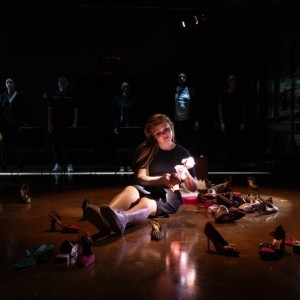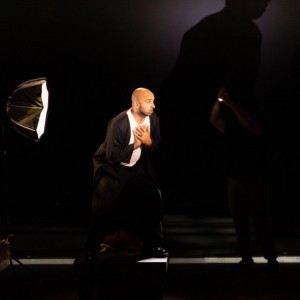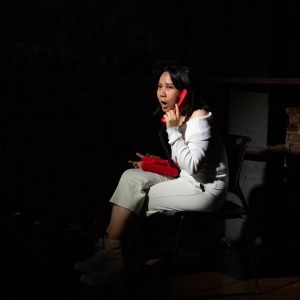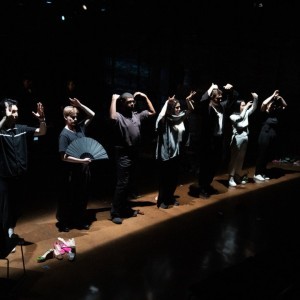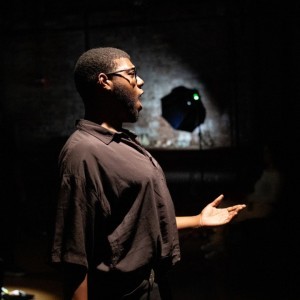July 25-26-27, 2025
MUSIC BY
W. A. Mozart
LIBRETTO BY
Lorenzo Da Ponte
LOCATION
The Downstairs Theater, La MaMa, Creative Shares
66 East 4th Street, New York, NY
SUNG IN
Italian with English Supertitles
RUNNING TIME
2 hours and 25 minutes with a 20-minute break
ACCESSIBILITY
La MaMa and all Teatro Grattacielo productions are wheelchair accessible and disability-friendly. Please contact us in advance for any specific accommodation needs.
PRODUCTION SUPPORT GENEROUSLY PROVIDED BY
Horace W. Goldsmith Foundation
Cornelia T. Bailey Foundation
The DuBose & Dorothy Heyward Memorial Fund
Eric Bottcher, New York City Council Member, Third District
Le Nozze di Figaro is partially made possible by the New York State Council on the Arts
with the support of the Office of the Governor and the New York State Legislature.
——————————————————————————————————————————————————-
This production holds my spirit. It reflects not only my artistic practice, but my ongoing questions about how opera lives, breathes, and speaks to the world around us.
Pierre-Augustin Caron de Beaumarchais’ The Marriage of Figaro has always fascinated me—not only as a brilliant comedy, but as a revolutionary act. Napoleon famously called it “the Revolution already put into action.” That line lives at the heart of this staging.
Here, shadows become language. They are not just visual—they are emotional. They represent what the characters suppress, what they cannot name, and what they fear. By shaping the space through light and absence, I wanted to reveal the fractures beneath their masks—the place where performance meets truth.
To deepen the dialogue between past and present, I’ve also woven fragments of Beaumarchais’ original text into the score. His voice—irreverent, sharp, deeply human—echoes within Mozart’s music, and within our own moment.— Stefanos Koroneos, Director
——————————————————————————————————————————————————-
CREATIVE TEAM
Abdiel Vazquez — Conductor
Stefanos Koroneos — Director
Anna Laura Miszerak — Assistant Director
Angela Huff — Costume Designer
Will Rossiter — Lighting Designer
Francisco Miranda — Collaborative Pianist, Assistant Conductor
Sarah Barrera — Stage Manager
CAST
Nicola Ziccardi — Count Almaviva (7/25 & 7/27)
Eric Luis Viñas — Count Almaviva (7/26)
Sarah Rose Johnson* — Countess Rosina Almaviva (7/25 & 7/27)
Lu Huang* — Countess Rosina Almaviva (7/26)
Bry Toll* — Susanna (7/25)
Jenna Weitman* — Susanna (7/26)
Paulina Rodriguez* — Susanna (7/27)
Jongwon Choi* — Figaro (7/25 & 7/27)
Ziliang Hao* — Figaro (7/26)
Eugenia Forteza — Cherubino (7/25 & 7/27)
Jordan Seguin-Gascoigne* — Cherubino (7/26)
Melina Jaharis — Marcellina (7/25 & 7/27)
Hasmik Asatryan* — Marcellina (7/26)
Rick Agster — Bartolo (7/25 & 7/27)
William Carr* — Bartolo (7/26)
Hunter Eisenmenger* — Basilio/Don Curzio (7/25 & 7/27)
Daniel Bauman* — Basilio/Don Curzio (7/26)
Alexandra Billhartz* — Barbarina (7/27) & Fancette*** (7/25)
Charly Rentz* — Barbarina (7/25) & Fancette*** (7/26)
Magnolia Flynn-Lebischak* — Barbarina (7/26) & Fancette*** (7/27)
Hans-Georg Speth** — Antonio
Darren Johnson — Actor 1 & Don Guzman Brid’oison***
Clementine Colby — Actor 2 & Doublehand***
Daniel Duran — Actor 3
*** Role created in Pierre Augustin de Beaumarchais’ original play
*In collaboration with Camerata Bardi International Academy
** In collaboration with Operastudio Molise
COVER CAST
Alexandra Billhartz* — Susanna Cover
Charly Rentz* — Susanna Cover
Magnolia Flynn-Lebischak* — Susanna Cover
Daniel Duran — Antonio Cover
PRODUCTION TEAM
Jacquelyn Downey — Sustainable Design and Production Intern *
Ricardo Monge — Poster Designer, Visual Artist
Krystel Juvet — Program Designer
*This internship focuses on developing eco-friendly solutions for opera production. The intern will research and implement sustainable practices for set materials, including responsible disposal and repurposing after The Tin Angel production. Additionally, they will explore ways to minimize paper waste in production workflows, contributing to Teatro Grattacielo’s commitment to environmentally conscious performing arts.
Synopsis
ACT I
On the day of their wedding, Figaro and Susanna—servants to Count Almaviva—prepare their new bedroom. Figaro soon learns that the Count, who once claimed to abolish feudal privileges, is secretly attempting to seduce Susanna. Alarmed, Figaro vows to outmaneuver him. Meanwhile, Cherubino, the Count’s teenage page, is dismissed after being caught in yet another romantic misadventure. As plans begin to form, the household becomes a web of secrets, flirtations, and early signs of revolt—echoing Beaumarchais’ critique of aristocratic entitlement.
ACT II
The Countess, deeply hurt by her husband’s infidelities, joins Susanna in a scheme to expose his hypocrisy. Cherubino is disguised in women’s clothes for a staged rendezvous meant to trap the Count. But the plan spirals into a comic frenzy of mistaken identities, slamming doors, and near-discovery. Though the opera maintains a lighter tone, the original play’s subversive undercurrent remains: those in service gain power not through status, but through cleverness and unity.
As suspicions mount, the Count tries to force Susanna into submission, unaware that she and the Countess are still playing him. Figaro is unexpectedly revealed to be the long-lost child of Marcellina and Bartolo, shifting the dynamics from scandal to reconciliation. The women’s plan culminates in a secret nighttime meeting, during which identities will be switched. While Da Ponte streamlines the story, Beaumarchais’ core remains: a servant’s wedding becomes an act of resistance within a crumbling hierarchy.
In the garden at night, deception reigns. Susanna—disguised as the Countess—meets the Count, while the real Countess, in Susanna’s dress, observes the seduction unfold. Figaro believes he’s been betrayed and prepares to confront Susanna, only to realize the truth. At last, the farce unravels: the Count is exposed and must ask his wife for forgiveness. She grants it. Beaumarchais’ revolutionary spirit lingers in the final tableau—where love wins, but only after power is humbled.
ACT III
As suspicions mount, the Count tries to force Susanna into submission, unaware that she and the Countess are still playing him. Figaro is unexpectedly revealed to be the long-lost child of Marcellina and Bartolo, shifting the dynamics from scandal to reconciliation. The women’s plan culminates in a secret nighttime meeting, during which identities will be switched. While Da Ponte streamlines the story, Beaumarchais’ core remains: a servant’s wedding becomes an act of resistance within a crumbling hierarchy.
ACT IV
In the garden at night, deception reigns. Susanna—disguised as the Countess—meets the Count, while the real Countess, in Susanna’s dress, observes the seduction unfold. Figaro believes he’s been betrayed and prepares to confront Susanna, only to realize the truth. At last, the farce unravels: the Count is exposed and must ask his wife for forgiveness. She grants it. Beaumarchais’ revolutionary spirit lingers in the final tableau—where love wins, but only after power is humbled.
—————————————————————————-


